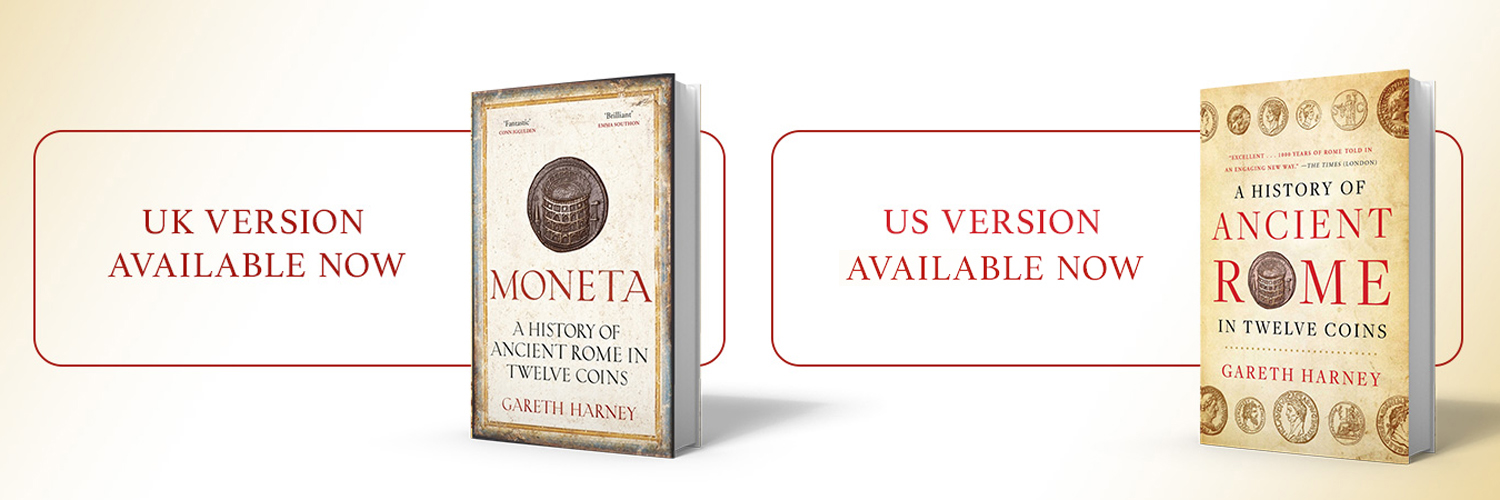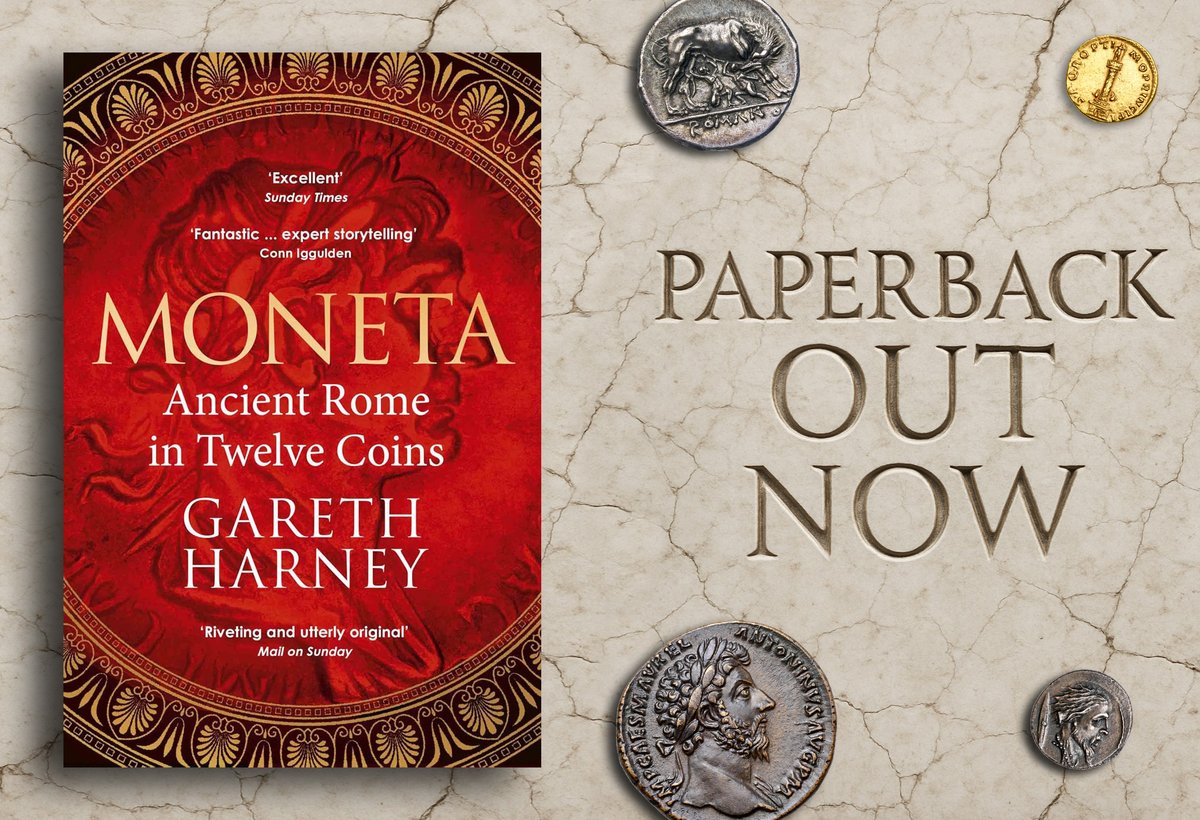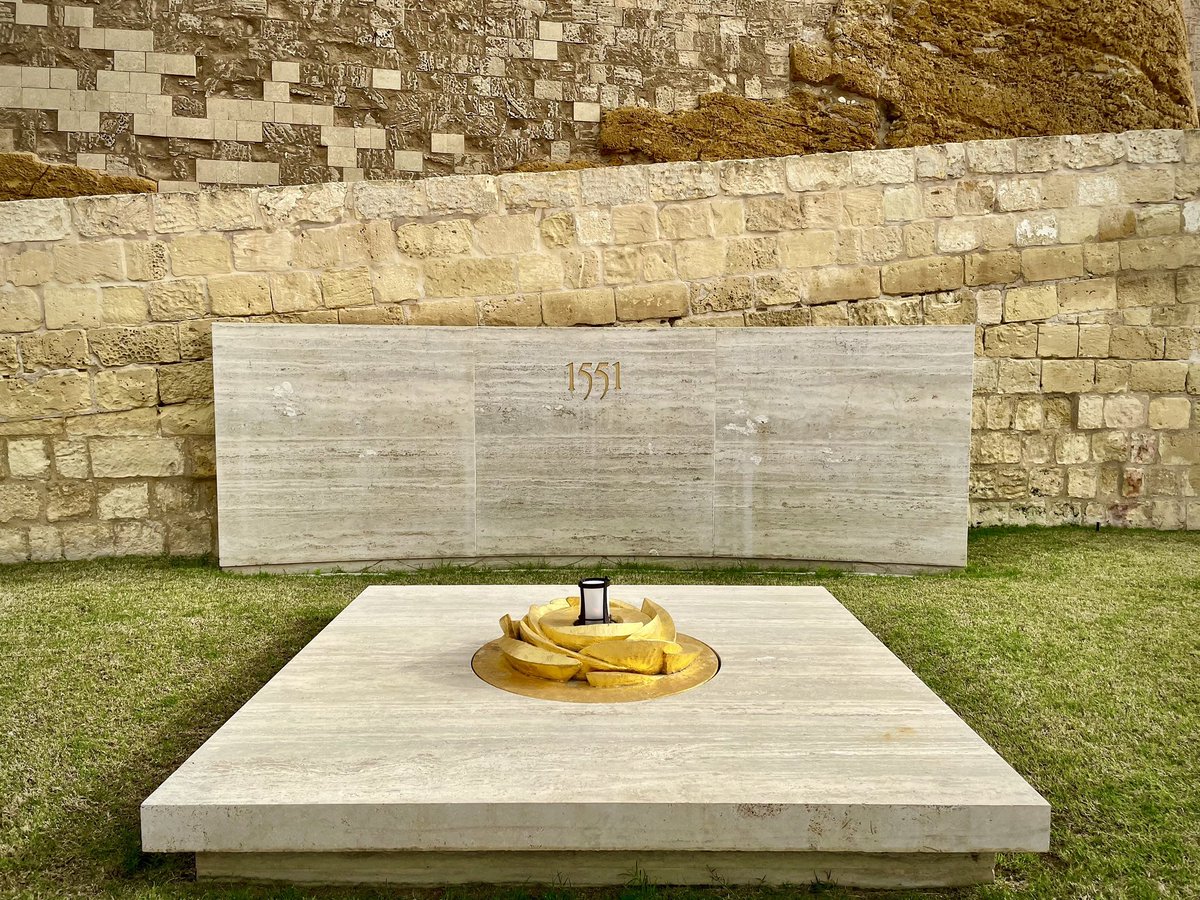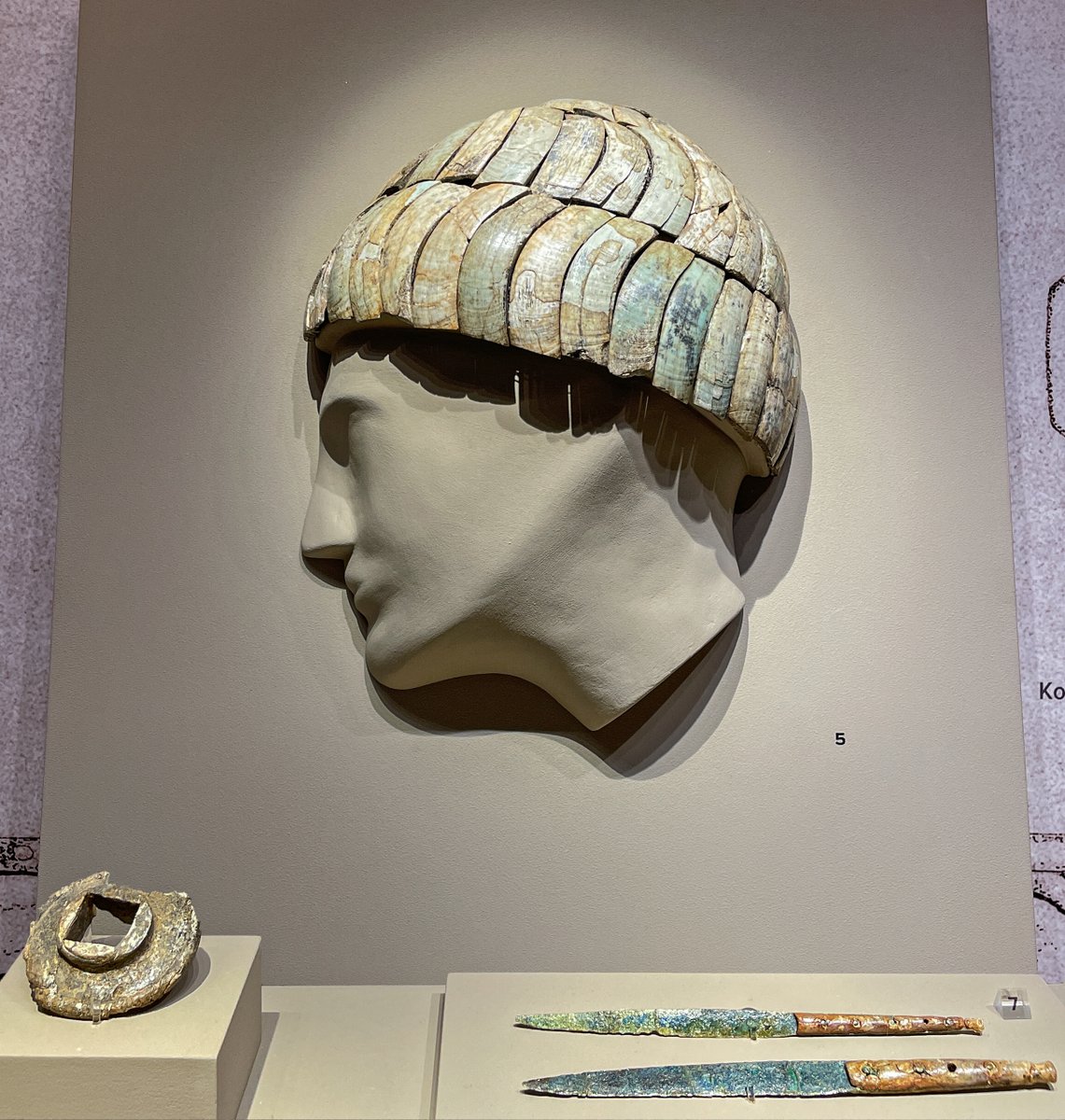
Gareth Harney
@OptimoPrincipi
Historian and author celebrating the endless wonders of the classical world. My book 'Moneta: A History of Ancient Rome in Twelve Coins' is OUT NOW.
Moneta is out today in paperback! "Riveting ... An utterly original history of Rome that compels from start to finish. A wonderful read." ― Mail on Sunday "An excellent 1,000 year history of Rome told in an engaging new way ... well worth a few denarii." ― The Times

'Dometia set up this monument in memory of her son, Paullus'. But Paullus is also missed by his beloved dog 'Mulion', who is shown on the gravestone sitting obediently, waiting for his master's return. Found reused in the defensive walls of Dion, Greece, 2nd century AD.
Warriors in combat on a Roman Republican denarius from my collection. The dynamic scene, just millimetres across, likely depicts the consul of 193 BC, Quintus Minucius Thermus, saving the life of a fellow soldier in battle - a deed which won him the Civic Crown military honour.
1) In the late 160s AD a Greek immigrant named Demetrios found himself in Roman Londinium, just as the city and wider empire were being ravaged by the deadly Antonine Plague. To guard himself against the pandemic, Demetrios had a magical spell inscribed on a lead sheet which he..
On this day in July 1551 the Maltese island of Gozo was attacked by a huge Ottoman fleet of 145 vessels. The ENTIRE population of around 6,000 Gozitans were taken into slavery and sold at slave markets in North Africa. (1551 Monument, Citadel of Gozo)

Neil Armstrong and reading… ‘Neil's mother Viola read to him constantly, instilling in him her love of books. The boy learned to read extraordinarily early, and would read street signs by the age of three. During his first year in elementary school, in Warren, Neil read over…

Boar tusk helmet dating to around 1500 BC, from Tomb 2 of the Mycenaean cemetery at Koukounara, Greece. Archaeological Museum of Pylos

12) ..a wineskin slung over his shoulder, foreshadowing his own grisly fate at the hands of Apollo, and with his arm raised defiantly in the air – a gesture that was seen to signify his personal autonomy and by extension the liberty of the people.